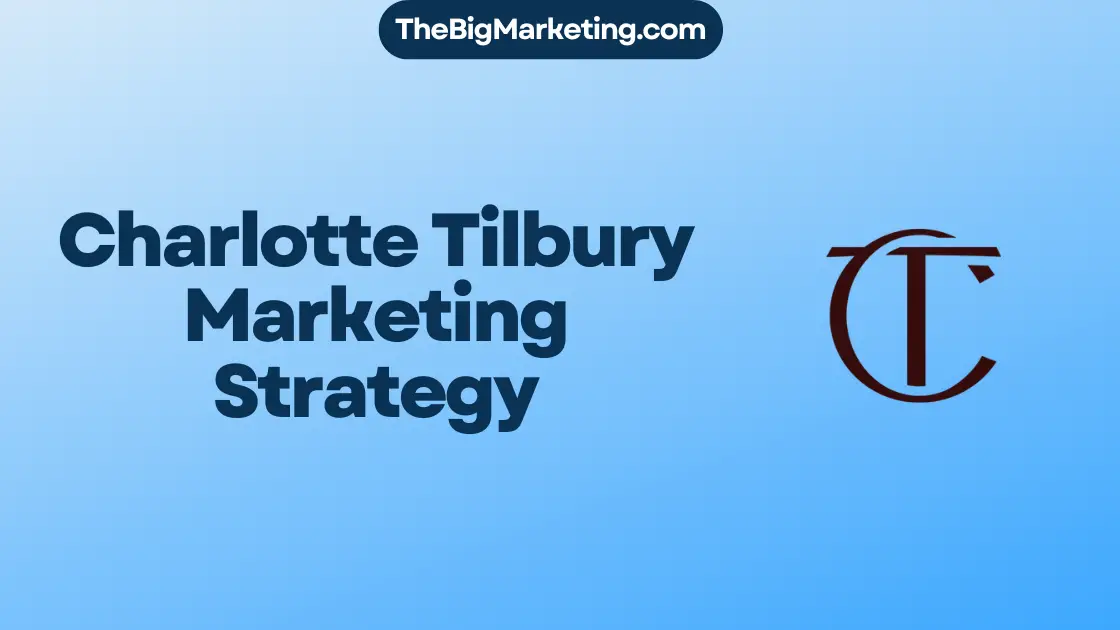A request for proposal (RFP) in marketing is something businesses use to find marketing help. They send it out to marketing agencies and freelancers. This invites them to offer plans for a project or to work together for a while. Using an RFP makes it easier for companies to look for and pick the best marketing support. It lets them meet new vendors and choose from top options in lists made by others.
The steps of the RFP process are clear. First, set your goals. Then, put a team together and write the RFP document. Next, share it in different ways. After that, look at the answers you get and pick the best partner for your project. This process helps find the right support for your marketing needs.
Key Takeaways:
- An RFP in marketing is a written document that invites marketing agencies and freelancers to submit proposals for a project or ongoing relationship.
- The RFP process provides a standardized procurement process, making it more efficient and effective for companies seeking marketing support.
- Issuing an RFP in marketing offers benefits such as greater reach, access to vetted solutions, and potential cost savings through competition.
- The RFP process involves setting objectives, assembling an RFP team, drafting the RFP document, distributing it, evaluating responses, and choosing a partner.
- By following the RFP process, businesses can find the right marketing partner and launch successful projects that contribute to business growth.
What Is an RFP in Marketing?
An RFP is a document that companies use to find marketing help. They send it to agencies and freelancers. It’s like an invitation for ideas on a certain project or for regular support.
The RFP lets companies describe what they need, their goals, and what they want to happen. It gives all the info needed for agencies to reply with their best proposals. This way, companies can pick the best marketing partner for their needs.
Why Issue an RFP in Marketing?
An RFP in marketing sets up a professional and effective method for businesses to find top marketing support. It helps save time and speeds up finding great agency partners. With an RFP, companies can start their marketing campaigns quicker and smoother.
Using an RFP makes the vendor selection organized and broadens the search. Businesses get to see new ideas from various providers. This means more options and better matches for their marketing goals.
Furthermore, an RFP sparks healthy competition among agencies. They work harder to offer the best deals. This leads to innovation and potentially lower costs for businesses.
In conclusion, RFPs in marketing offer a structured way to find the best marketing support. They ensure quick access to top resources and foster competition. This all can make campaigns more cost-effective.
| Benefits of Issuing an RFP in Marketing |
|---|
| Fast and efficient way to find expert marketing support |
| Opportunity to build valuable contacts in the industry |
| Enables businesses to launch effective campaigns faster |
| Formal approach with standardized procurement process |
| Greater reach and access to vetted solutions |
| Fosters healthy competition and potentially lowers project costs |
What Does the RFP Process Look Like?
The RFP process allows companies to find the best marketing partners easily. It follows a set structure with several important steps, no matter the goal.
Setting Objectives
In the start, the company must outline its project goals. It has to decide on what needs to be achieved and who the target audience is. This gives potential vendors a clear view of what is expected.
Assembling the RFP Team
A team of internal and external experts is then put together. They understand the project’s aims and what’s needed. Their knowledge ensures the RFP document is detailed and correct.
Drafting the RFP Document
With the team ready, drafting the RFP document is the next step. It’s an invitation to potential vendors, detailing the project and selection criteria. Every detail is checked for clarity.
Distributing the RFP
The completed RFP is shared through different channels to find vendors. These include contacts, industry groups, and online platforms. This approach helps in reaching a wide array of qualified vendors.
Reviewing and Evaluating Proposals
After the deadline, it’s time to look at the proposals. The company examines each vendor’s skills, experience, and pricing. Discussions and meetings help in this evaluation.
Ultimately, the RFP process is about finding the right partner for marketing projects. By following these steps, companies can smoothly select the best vendor for their needs.
Set Your Objectives
Before you start the RFP process, it’s important for businesses to know what they want. Clear goals guide you through the process. They help you figure out what you’re aiming for and shape the project’s scope. By setting these goals, you can make sure your RFP draws in vendors who are up to the task.
Figuring out your objectives isn’t hard. You can look online to understand the latest industry trends and what works best. Having meetings with important team members helps too. They can pinpoint what you need and ensure it fits with your company’s big plan. Sometimes, talking to a marketing expert is a good move for extra advice and confirmation.
Knowing what you want from the start helps you find the right vendors. It makes your RFPs clear and focused, showing exactly what you’re looking for. When your goals are clear, picking the best vendor to reach them becomes easier. This way, you can boost your marketing and push your business ahead.
Key Steps:
- Conduct online research to gain insights into industry trends and best practices.
- Hold internal meetings involving key stakeholders to identify desired outcomes and align them with the overall business strategy.
- Consider seeking advice from a marketing consultant to gain valuable insights and validation for objectives.
- Use the objectives to target the right vendors and tailor the RFP document to attract companies with relevant experience and expertise.
Assemble Your RFP Team
Creating an RFP team is crucial in the proposal process. This group contains both internal members and external contractors who are affected by the project. They bring different skills and views, making the team strong.
For example, an SEO RFP team might have a marketing manager, website manager, designer, and others. Each person adds their expertise, making the process better.
Internal stakeholders set the project’s goals and needs. They know the organization’s aims very well. External contractors, like writers and developers, add their special skills. This makes the SEO strategy better and more effective.
Gathering a diverse RFP team means all project parts are looked at carefully. This way, from planning to doing the project, everything goes smoother. The team works together closely, keeping goals aligned and making updates easy.
The Impact of Assembling the Right RFP Team
Choosing the right RFP team really matters for the project’s success. A varied team offers new ideas and a deep project understanding. This leads to smarter choices, better problem-solving, and a successful project.
Having internal members on the team helps everyone understand the company’s vision. They offer insight into the audience and branding. Plus, the skills of external people, like developers, make the SEO strategy even better.
By making a good RFP team, companies use the group’s combined knowledge and skills. This teamwork improves the RFP document and encourages open talks and shared responsibility. In the end, the right team leads to success and opens doors for future opportunities.
Draft Your RFP Document
The process of creating the RFP document is very important. It acts as a guide for potential vendors, giving them all the details they need about the project. Ensure your RFP document has all the important info. This will help vendors know if they’re a good fit and make a suitable offer.
Company Information
Begin with an introduction to your company. Share your company’s name, the field you’re in, your mission, and other key details. This lets vendors understand your company’s values and what you aim for.
Purpose of the RFP
Be clear about why you’re seeking external help with the RFP. It could be for a specific project, ongoing support, or a long-term partnership. List the main goals or problems you’re hoping to solve with this partnership.
Project Overview and Deliverables
Give vendors a detailed description of the project, including its scope, timeline, and what you expect at the end. Describe the desired outcomes clearly. This makes sure there’s no confusion about what you need.
Managing the RFP Process
Talk about how you’ll handle the RFP procedure. Include the steps vendors need to follow and any deadlines. Tell vendors how and where to send their proposals, and if there are specific formats or documents required. Clear guidance helps make the process smoother for you and the vendors.
Key Dates
Include crucial dates in the RFP process like when proposals are due, the selection day, and other milestones. This helps vendors plan and keeps everyone informed about the schedule.
Selection Criteria
Explain how you’ll pick the right vendor. List what you’re looking for, such as experience, pricing, references, and how well they understand your project. Being clear about this helps vendors tailor their proposals to fit your needs.
Proofreading
Before sending out your RFP, double-check it for clarity and professionalism. Look out for any spelling mistakes or typos. A well-prepared RFP will draw in the best vendors and show that your company cares about details.
After preparing your RFP, share it with potential vendors through different channels. You could use your contacts, industry groups, online forums, or agency platforms. A structured RFP process lets you clearly state what you need and find the perfect vendor for your project.
Distribute Your RFP Document
After creating your RFP document, the next step is to share it with possible vendors. To ensure it reaches the right audience, consider these distribution methods:
- Existing Contacts: Email or share the document with people you already know. This includes trusted vendors, colleagues, or past partners who have the skills you need.
- Industry Groups: Use industry-specific groups or associations to find experts. This helps you connect with professionals who know your sector’s challenges and opportunities.
- Online Communities: Get involved in online forums related to your project or industry. These are great places to meet experts, share ideas, and find solutions.
- Agency Partner Platforms: Check out platforms that link you with top marketing agencies. They list vetted agencies, simplifying your search for the perfect match.
- Website Publishing: Post the RFP on your company’s website. Create a page or section where people can easily find and read it.
- Social Media Channels: Use social media like LinkedIn, Twitter, or Facebook to promote your RFP. Share it with relevant hashtags to reach more people.
- Job Listings Page: Consider putting the RFP on your job listings page. It lets vendors discover your RFP while they’re looking at job ads.
When sending out your RFP, make sure you include the deadline and contact info for questions. Using these methods wisely, you can make your RFP more visible. This attracts a wide range of skilled vendors to choose from.
Choose Your Partner and Onboard Them
After the deadline for submissions, the issuing company starts to review the proposals from potential vendors. They look at each vendor’s offers, experience, and solutions. It’s important to check how well a vendor’s plans meet the company’s goals, not just the costs.
Reaching out to former clients of an agency is a smart move. It helps understand the agency’s work better. This can make the decision process easier.
The company may either pick a partner or narrow down the top choices for more talks. Selecting the right partner goes beyond just the price and schedule. It involves looking closely at the vendor’s skills, history, and strategy.
Talking directly through in-person or virtual meetings is advised during the selection phase. This helps clear up any questions and checks if the company and vendor match well. These talks help set clear expectations, seal the deal on the partnership, and kick off a strong collaboration.
The Selection Process:
Review proposals
Evaluate their capabilities, experience, and proposed solutions
Contact client references for further insight
Consider pricing and alignment with company objectives
Hold meetings for further negotiation and clarification
Finalize the partnership agreement
Choosing the best partner through a careful process lays the groundwork for a successful marketing project. By thoroughly reviewing proposals, weighing key factors, and openly communicating, businesses can build a beneficial partnership that meets their aims and increases the likelihood of a successful result.
Conclusion
The Request for Proposal (RFP) process is key for a successful marketing partnership. By using an RFP, businesses can match with the right marketing help. This match supports their goals, launches successful projects, and grows the business.
This process is standardized to boost efficiency. It lets businesses pick vendors who best fit their needs, based on their experience and proposals. This way, companies can choose a vendor who will truly support their objectives.
The RFP process helps companies find the best marketing partners smoothly. This leads to project success and business growth. It’s a great way for businesses to meet talented marketing pros. These pros can push their marketing strategies and help reach their goals.








